Minute Maid Park
Houston, Texas
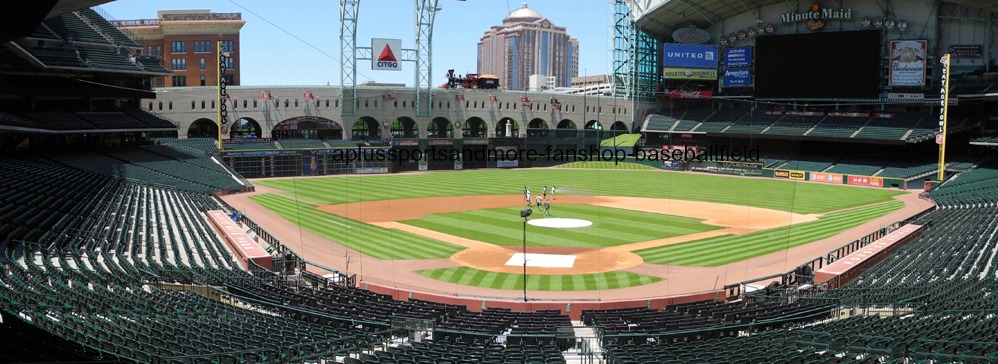 Minute Maid Park With Roof Open
Minute Maid Park With Roof OpenMinute Maid Park, located in Houston, Texas, was Baseball's second retractable-roof-Ballpark but the first for Houston’s.
It was the predecessor to the Astrodome which, at the time, was the first stadium that allowed fans to enjoy baseball in a climate controlled environment.
Unlike the Astrodome, it featured a Retractable Roof that gave Baseball fans the best of both worlds.
This new Stadium also features a natural grass field as opposed to Astro Turf. Players generally disliked Astro Turf because of the beating taken by the knees, ankles and hips. The surface was much like playing on a carpet laid over concrete.
The stadium was designed and built by HOK Sports Facilities Group which knew early on that a retractable roof would be a must for the Texas climate.
If you have even been to Houston in the dog days of summer you understand how dangerously hot it can get, with temperatures soaring to over 100 degrees and humilities over 90.
Minute Maid Park Roof Design
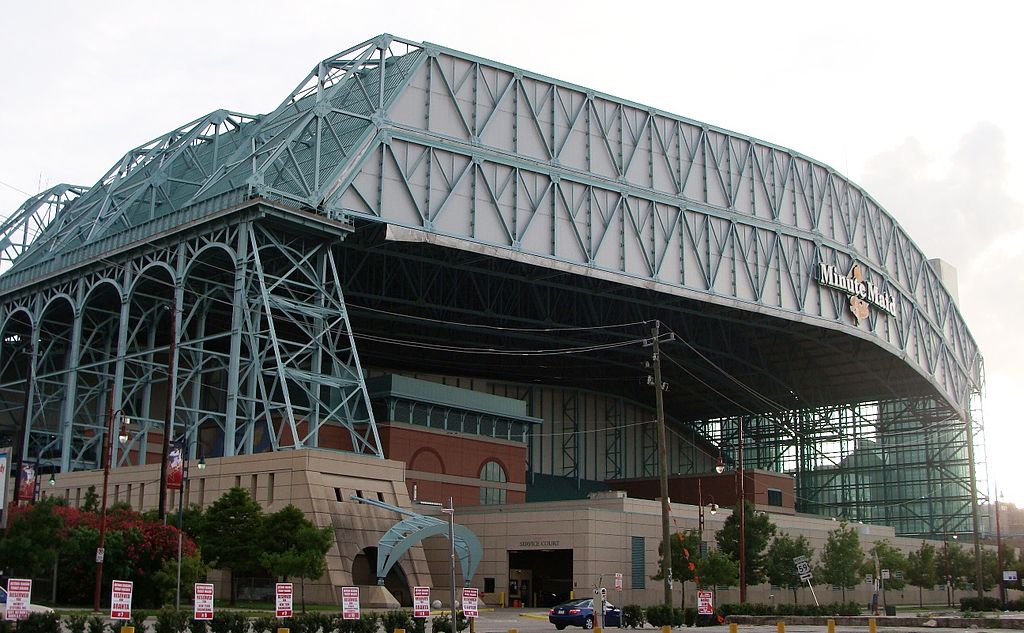 Minute Maid Park Entrance
Minute Maid Park EntranceSince building the first retractable roof ballpark, designers have crafted several methods of opening and closing a retractable roofs.
Some, for instance, open only over a Small central section. The roof at Minute Maid Park, however, retracts completely off the ballpark to reveal the largest open area of any retractable roofed baseball stadium in existence today.
A total of 50,000 square feet of glass in the west wall of the retractable roof give fans a view of the Houston skyline, even when the roof is in the closed position.
Uni-systems provided the technical expertise to design the best roof structure for the stadium.
Mechanized roof panels open and close in 12-20 minutes. The roof moves back and forth an estimated 160 times a year, a distance of 14.6 miles. To cover the ballpark, steel panels roll in sequence along tracks on the east and west sides of the stadium.
When the roof is open, the southern and northern panels, each of which measures 537 by 120 feet and weighs 1,905 metric tons, rest at the north end below the large middle section with its dimension of 589 by 242 feet and a weight of 3,810 metric tons.
Forged steel wheels measuring 35 inches in diameter transport the three roof panels. Each of the 140 wheels has its own braking mechanics and 60 are equipped with electric motors.
If the track is slightly out of alignment, all the weight of a roof panel could come to rest on one wheel, causing severe structural damage. To prevent this, a polyurethane suspension pad that acts as a spring is attached above each wheel to distribute the roof's weight.
The low track/high track configuration and the roof's built-in glass wall not only offer valuable efficiency, but afford a panoramic view of the surrounding landscape unlike any other roofed ballpark.
Stadium features & AMENITIES
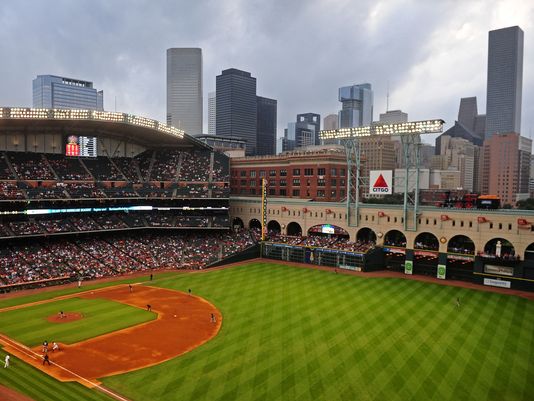 Minute Maid Park View of Skyline
Minute Maid Park View of SkylineFrom Baseballpilgrimage.com;
"A jewel in the crown of the majestic downtown Houston skyline, It has become a welcome home for the Houston Astros and has ushered in a new era of Major League sports in the city.
The downtown ballpark continues the proud tradition of visionary innovation in stadium construction, beginning with the club's previous home - the Astrodome. This new retractable roof technology brought open-air baseball to Houston for the first time in 35 years, and the natural grass surface and classic architecture provided Minute Maid Park the atmosphere of the great ballparks of baseball's Golden age.
Often times described as a bandbox of a ballpark with two distinct personalities depending on whether its retractable roof is open or closed.
Built on the eastern edge of downtown Houston, the baseball-only, facility actually looks like a football stadium on the outside, as Minute Maid Park appears more rectangular than the traditional square shaped footprint that ballparks occupy.
The shape of the ballpark is due to the 242-foot high retractable roof that can open or close in about 20 minutes. The roof, which cost $65 million, retracts completely off the ballpark when open, which is supposedly 60 percent of the time.
With the roof open, It is one of the premier ballparks in baseball, featuring unobstructed downtown views of the nation’s fourth largest city. From the upper deck you can watch traffic lights changing in a timed sequence on Prairie Street, which is the road behind the left field wall leading away from the ballpark.
Many have said that when the retractable roof is closed, the park loses much of its appeal. Although 50,000 square feet of glass running the length of the ballpark’s west wall still gives fans a view of the Houston skyline, the feel of the ballpark is quite different. Imagine swimming in an indoor pool opposed to an outdoor pool and you’ll have an idea of the change in atmosphere. Unfortunately, indoor baseball is a frequent necessity in the summer due to Houston’s oppressive heat.
The best part about the ballpark’s design is the unique features that make up the backdrop of Minute Maid Park’s outfield, the most noticeable of which is the cream-colored wall, about 800 feet in length, with arches cut into it".
Related Stadiums;
Chase Field-$364 million
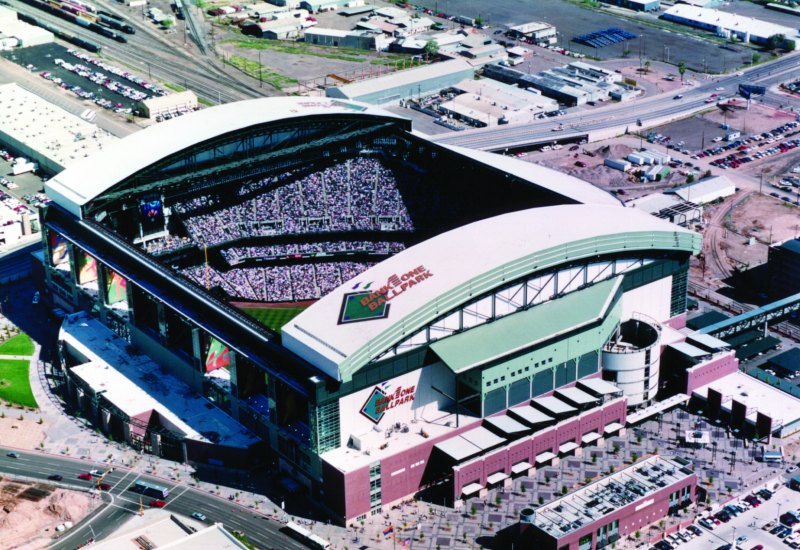 Chase Field-Phonix, Arizona
Chase Field-Phonix, ArizonaMarlins Stadium-$508 million
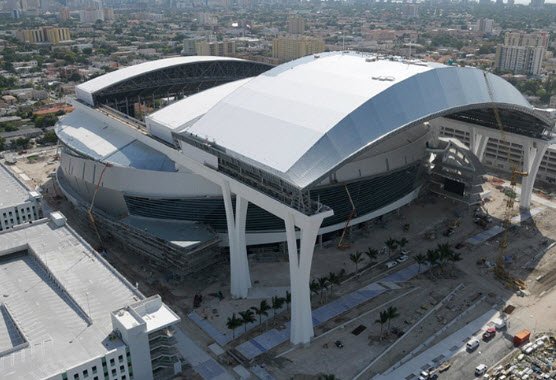 Marlins Stadium-Miami, FL
Marlins Stadium-Miami, FLMiller Park-$392 million
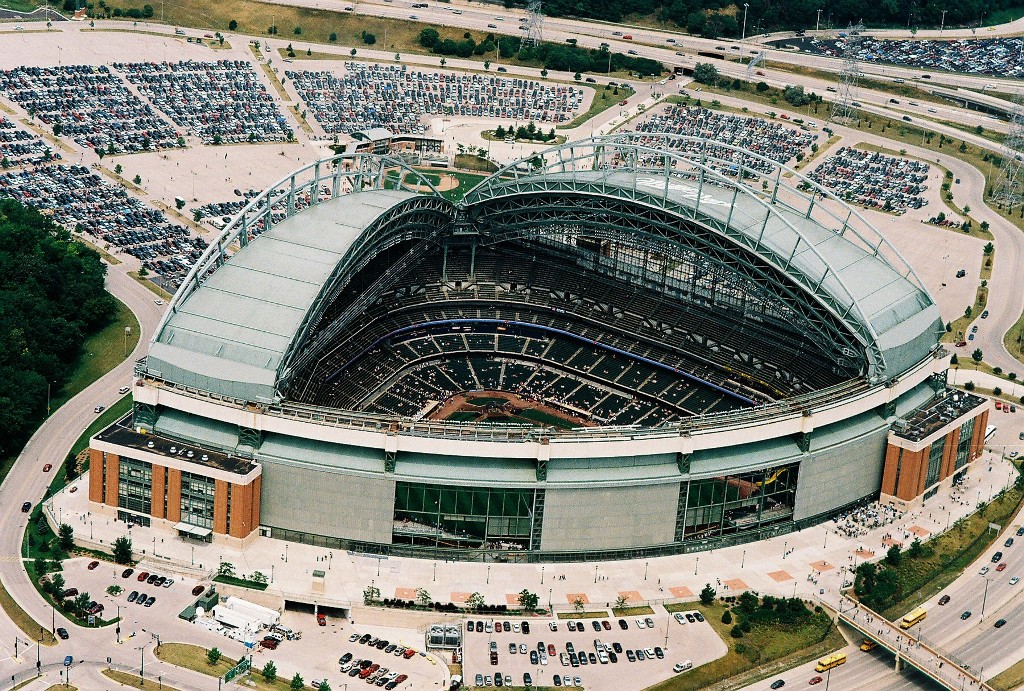 Miller Park-Milwaukee, WI
Miller Park-Milwaukee, WISafeCo Field- $517 million.
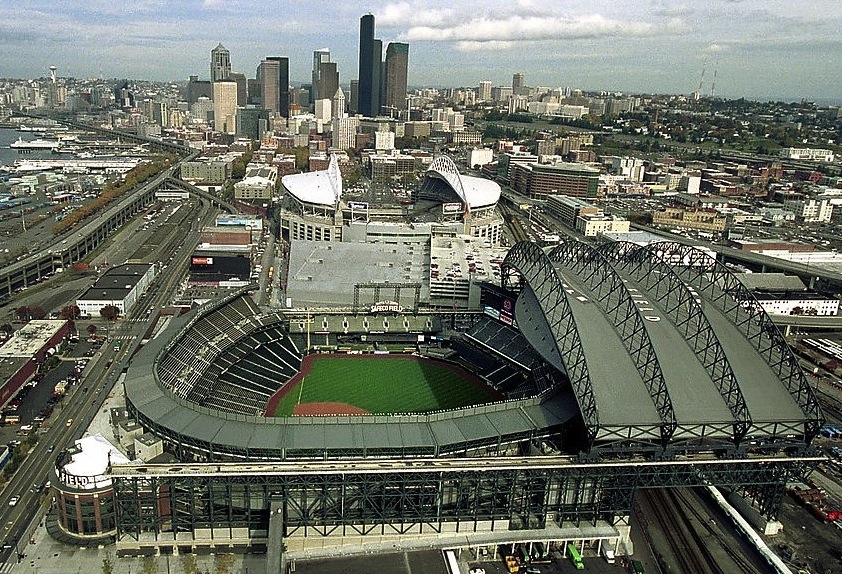 Safeco Field, Seattle, WA.
Safeco Field, Seattle, WA.Future Stadium construction;
The concept is one of two visions that gave 360 Architecture the contract to design a new Atlanta Falcons stadium in downtown Atlanta. As it turned out, the final version is just an evolution of the first idea. The stadium will hold some 71,000 people (compared to 65,000 planned initially) and cost $ 1.6 billion (initially thought to be 1 billion).
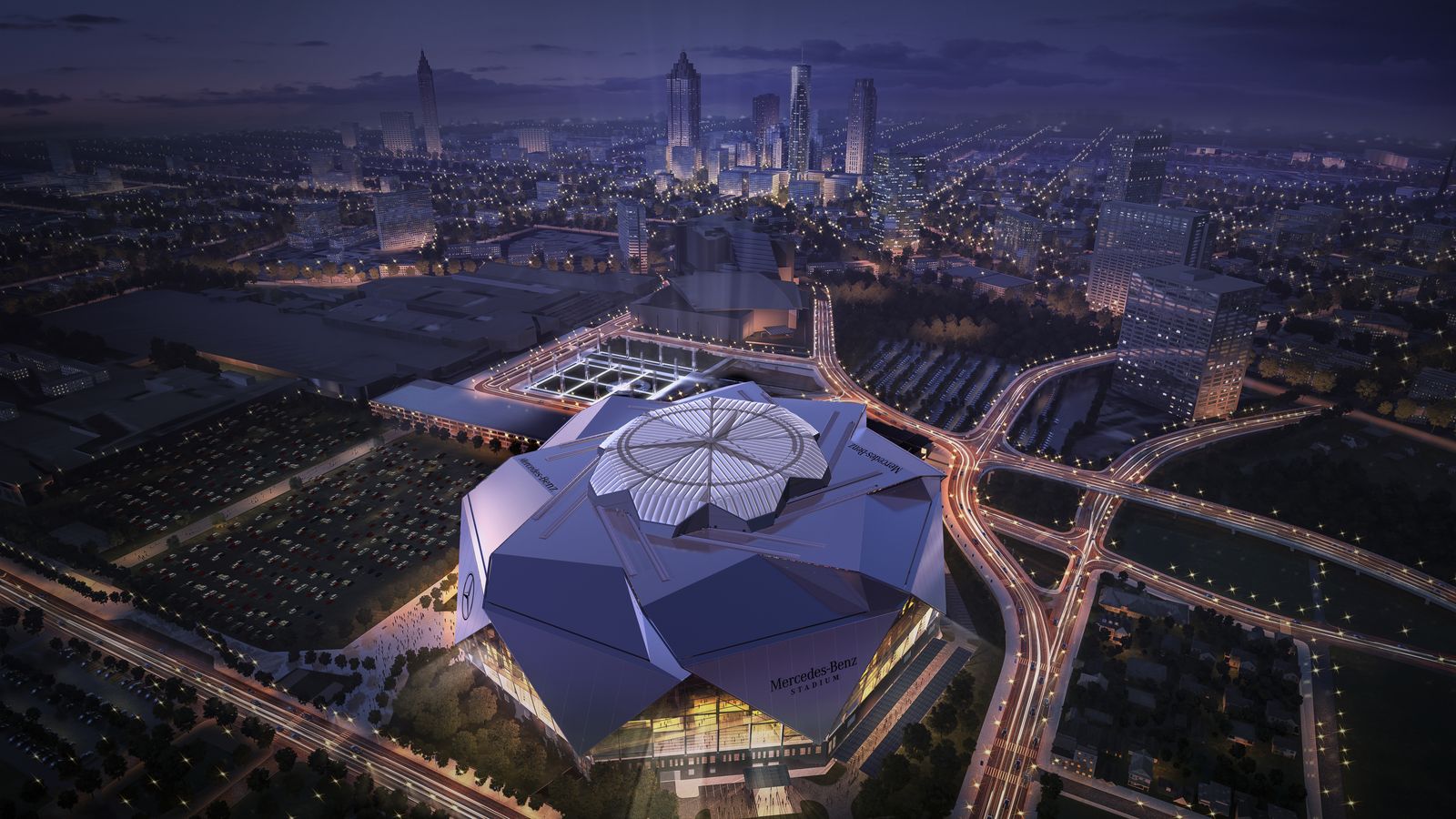 Mercedes Benz Stadium at night top closed.
Mercedes Benz Stadium at night top closed.Nicknamed by architects as the Pantheon, it seems to deserve the name. Connection with the Roman Pantheon is no accident here – independent petals of retractable roof structures may slide to create either a closed dome or a circular skylight above the centre of the field, just like in Rome. Of course each petal may also be located on the permanent roof to give the feeling of a regular stadium with only stands covered.

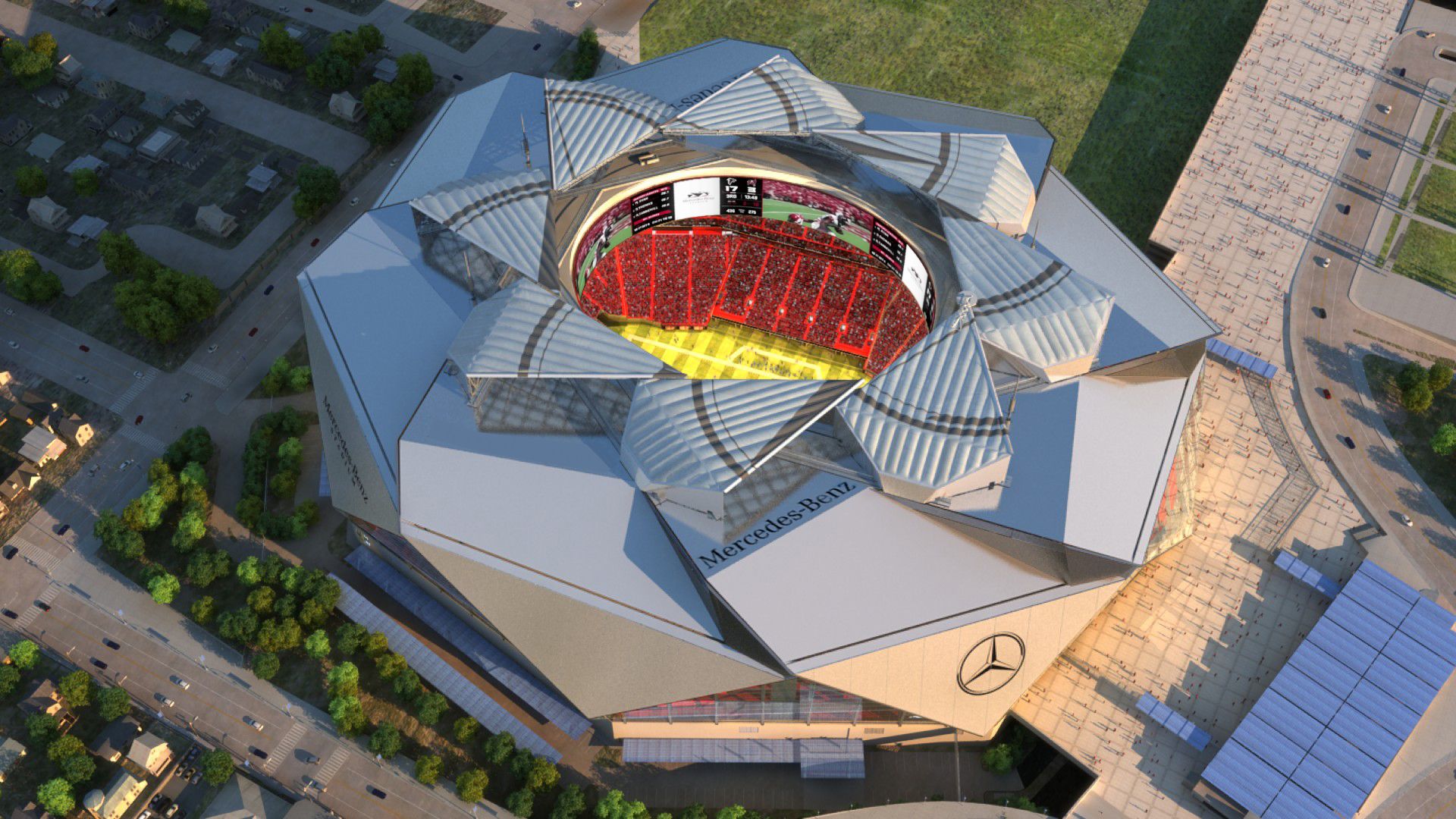
New! Comments
Have your say about what you just read! Leave me a comment in the box below.